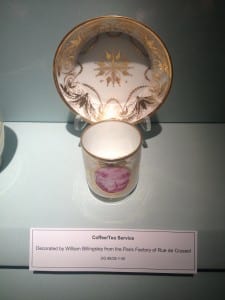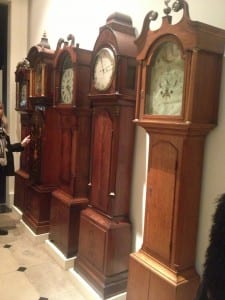Our performance is focused around smuggling London culture into Lincoln by placing a large sculpture of Big Big in the room of the Usher Gallery filled with paintings of Lincoln from different eras. We want to create quite a disruptive and energetic piece and in a sense take over the gallery for the thirty minutes we will be performing. During the construction of the Big Ben (which will be hectic) there will be a tea break where afternoon tea will be served, including scones, little cakes and sandwiches emphasising the typically English architecture of the building as well as the era it was built (1920’s). This will bring down the hectic nature of the performance and completely contrast with the constructing as the balaclavas will be removed and we will look like respectable 1920’s women enjoying a spot of tea on their lunch break.
In a sense we are creating a ‘lived-in’ space as we take over the gallery and when we leave after the performance is finished our afternoon tea will be left to show that someone has been there and lived in it. The Reckless Sleepers who were formed in Nottingham in 1989 have frequently undertaken this notion of a ‘lived-in’ space, most prominently with their performance of ‘The Last Supper’ in 2003 where thirty-nine audience members were invited to dinner. We have been inspired by this idea of getting the audience involved so therefore, during our afternoon tea we will be inviting some audience members to join us, thus emphasising this notion of a ‘lived-in’ space and hopefully increasing the entertainment value.
Author: Fotini Efstathiou
Works Cited: Govan, Emma, Helen Nicholson and Katie Normington (2007) Making a Performance: Devising Histories and Contemporary Practices, Oxon: Routledge, p. 115.

